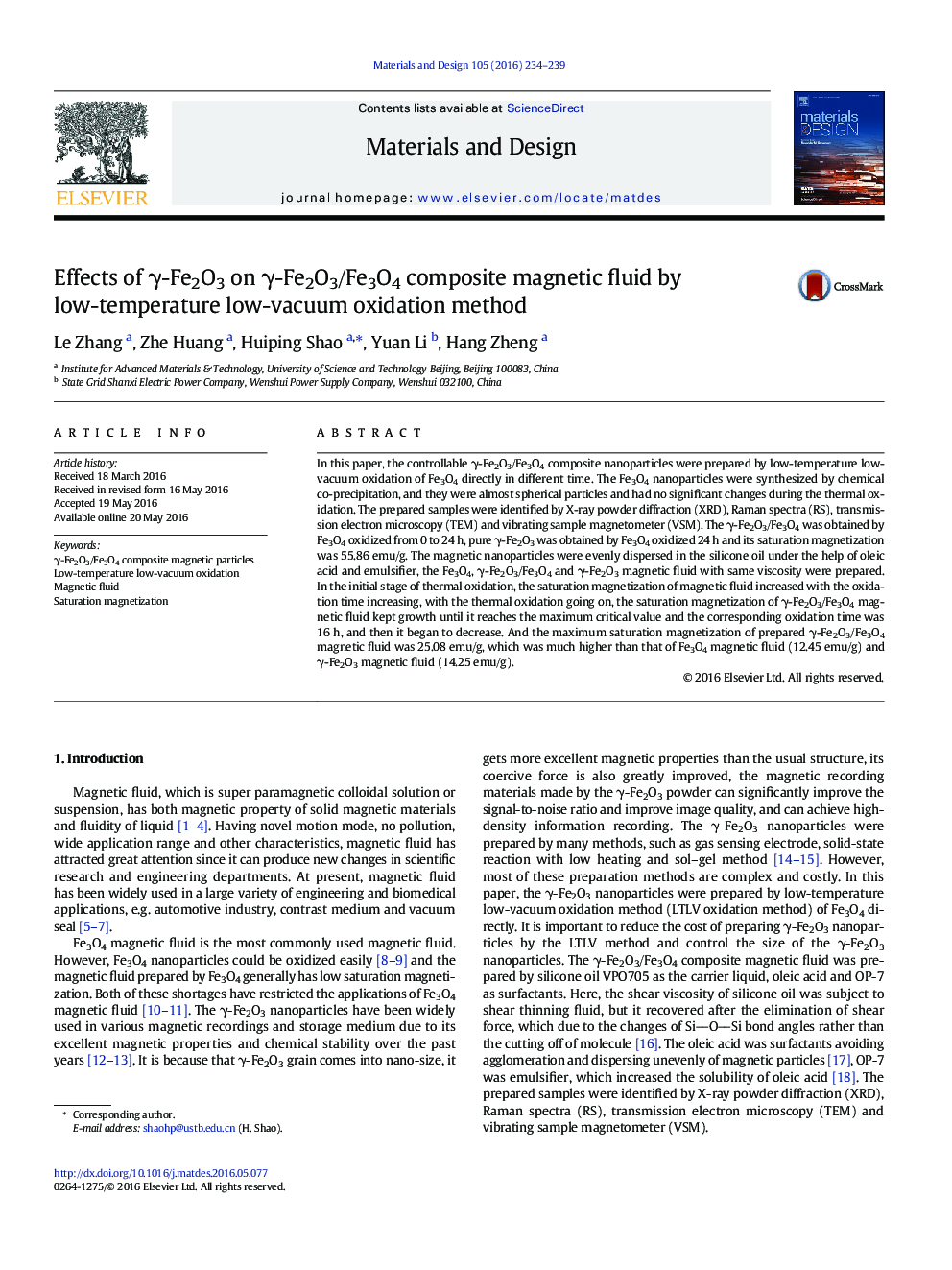| کد مقاله | کد نشریه | سال انتشار | مقاله انگلیسی | نسخه تمام متن |
|---|---|---|---|---|
| 827834 | 1470277 | 2016 | 6 صفحه PDF | دانلود رایگان |

• The different ratio of γ-Fe2O3 and Fe3O4 nanoparticles were prepared by LTLV oxidation method.
• The γ-Fe2O3 nanoparticles can increase the dispersion and magnetization of γ-Fe2O3 and Fe3O4 composite magnetic fluid.
• The LTLV oxidation method is low-cost and simple.
In this paper, the controllable γ-Fe2O3/Fe3O4 composite nanoparticles were prepared by low-temperature low-vacuum oxidation of Fe3O4 directly in different time. The Fe3O4 nanoparticles were synthesized by chemical co-precipitation, and they were almost spherical particles and had no significant changes during the thermal oxidation. The prepared samples were identified by X-ray powder diffraction (XRD), Raman spectra (RS), transmission electron microscopy (TEM) and vibrating sample magnetometer (VSM). The γ-Fe2O3/Fe3O4 was obtained by Fe3O4 oxidized from 0 to 24 h, pure γ-Fe2O3 was obtained by Fe3O4 oxidized 24 h and its saturation magnetization was 55.86 emu/g. The magnetic nanoparticles were evenly dispersed in the silicone oil under the help of oleic acid and emulsifier, the Fe3O4, γ-Fe2O3/Fe3O4 and γ-Fe2O3 magnetic fluid with same viscosity were prepared. In the initial stage of thermal oxidation, the saturation magnetization of magnetic fluid increased with the oxidation time increasing, with the thermal oxidation going on, the saturation magnetization of γ-Fe2O3/Fe3O4 magnetic fluid kept growth until it reaches the maximum critical value and the corresponding oxidation time was 16 h, and then it began to decrease. And the maximum saturation magnetization of prepared γ-Fe2O3/Fe3O4 magnetic fluid was 25.08 emu/g, which was much higher than that of Fe3O4 magnetic fluid (12.45 emu/g) and γ-Fe2O3 magnetic fluid (14.25 emu/g).
Figure optionsDownload as PowerPoint slide
Journal: Materials & Design - Volume 105, 5 September 2016, Pages 234–239